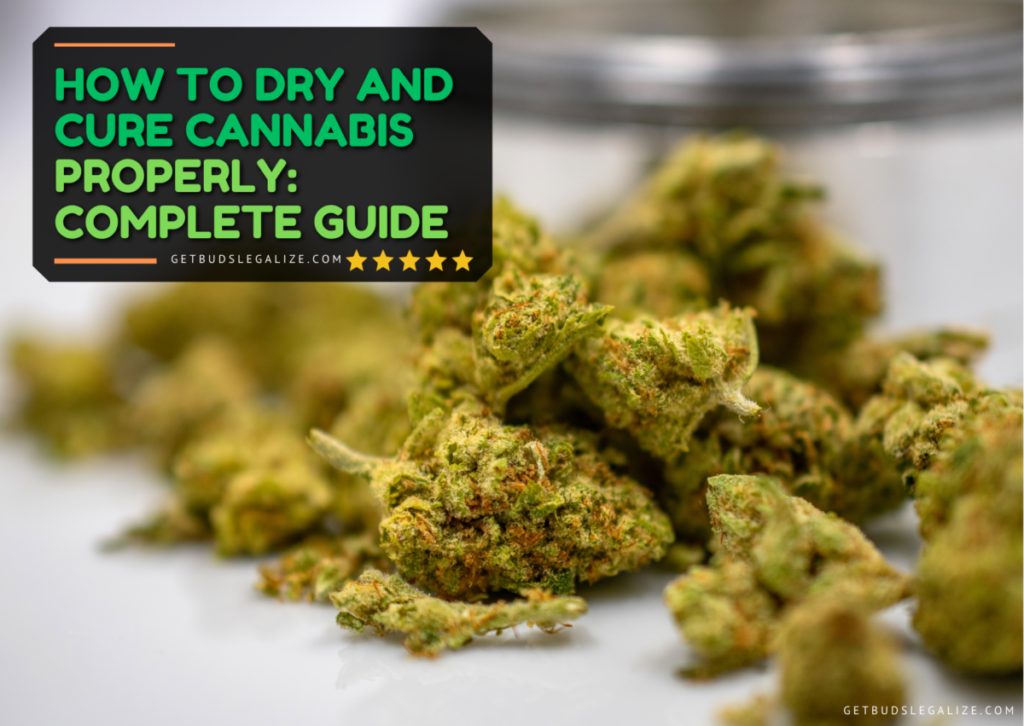When Is the Best Time to Harvest Your Cannabis Plants? Timing Is Everything
Harvesting your cannabis plants at the right time can make or break your entire grow. Harvest too early, and you’ll end up with underwhelming buds that lack potency and flavor.
Harvest too late, and you risk degraded cannabinoids, mold, or harsh smoke. Whether you’re growing indoors or outdoors, understanding the visual signs of maturity is essential for getting the effects and quality you want.
In this guide, we’ll walk you through all the signs to watch for—from trichomes to pistils—so you can harvest with confidence and get the most from your cannabis plants.
1. Trichome Color: The Most Reliable Way to Know When to Harvest Cannabis
Trichomes are the tiny, mushroom-shaped glands that cover your cannabis buds and leaves.
These resinous structures contain THC, CBD, and aromatic terpenes—the compounds responsible for potency, flavor, and the unique effects of each strain.
How to Inspect Trichomes:
- Use a jeweler’s loupe, macro lens, or digital microscope with at least 40x magnification.
- Examine buds under natural light for the most accurate view.
- Pay close attention to the top colas, but also inspect buds lower down the plant.
Trichome Color Guide:
| Trichome Color | Timing | Effect |
| Clear | Too early | Weak, minimal THC |
| Cloudy/Milky | Ideal | Potent, euphoric high |
| Amber | Slightly late | Relaxing, sedative high |
💡 Pro Tip: Aim for about 70% cloudy, 20–30% amber, and 0–10% clear trichomes to strike the perfect balance between potency and desired effects.
Related Article:
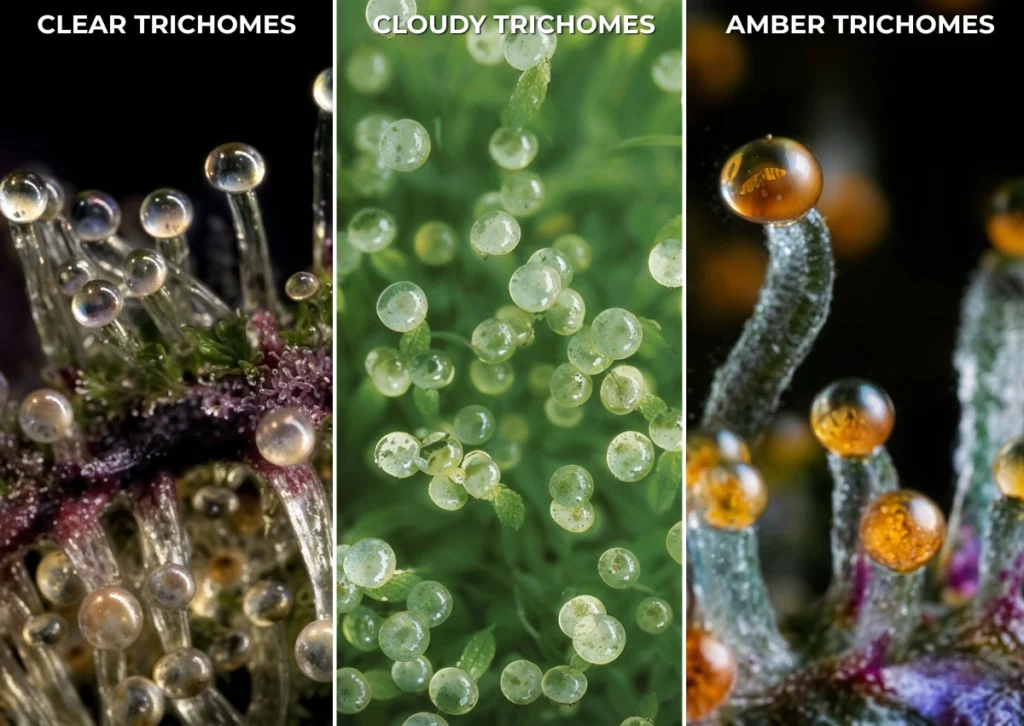
2. Yellow Leaves: A Natural Indicator of Maturity
As cannabis plants near harvest, they naturally redirect nutrients from their fan leaves into the buds, causing the leaves to yellow and die off.
This nutrient reallocation supports bud development and signals plant maturity.
- Expect yellowing fan leaves 1–2 weeks before harvest during the final flushing period.
- Healthy yellowing affects fan leaves only; sugar leaves near buds should remain mostly green.
⚠️ Warning: Yellowing that appears too early or on sugar leaves can signal nutrient deficiencies or stress.
3. Pistil Color and Curl: Supporting Evidence of Readiness
Pistils are the tiny hair-like structures protruding from cannabis flowers. Their color and shape offer important clues about harvest timing.
- Less than 50% darkened pistils: Harvest too early—buds immature.
- 50–70% dark and curled pistils: ideal harvest window.
- 80%+ dark pistils: Possibly overripe; verify with trichomes before harvesting.
💡 Note: Sativa-dominant strains may retain more white pistils even at maturity, so always cross-check with trichome color.
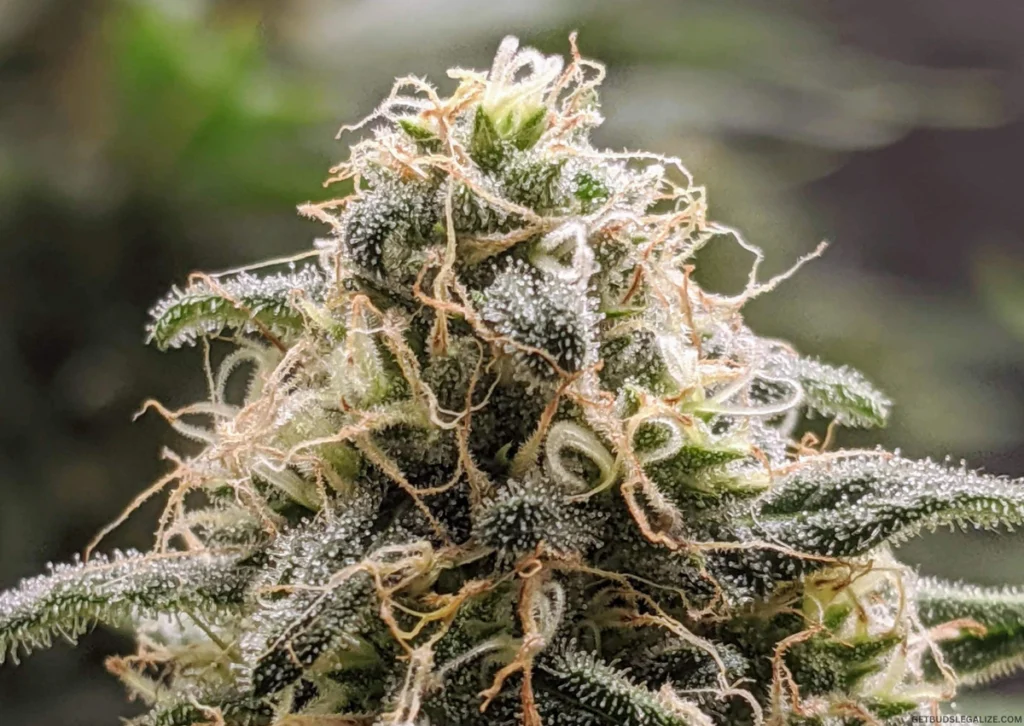
4. Curling or Drying Leaves: Late-Stage Maturity Indicator
Toward the end of flowering, water uptake slows down. This causes leaves to dry out, curl, and sometimes crisp, especially in environments with low humidity.
- This drying is a normal sign that your plant is finishing its lifecycle.
- However, if curling is accompanied by discoloration, spots, or pests, it may indicate issues rather than maturity.
- Always cross-reference this sign with trichomes and pistil color.
5. Trust Breeder Timelines (But Don’t Rely on Them Alone)
Seed packets often list flowering durations like “8–10 weeks.” These timelines are helpful for planning, but can vary widely depending on environmental factors and growing conditions.
- Indoor grows tend to follow breeder timelines more closely due to controlled environments.
- Outdoor harvest timing can vary significantly based on climate, weather, and geographic location.
- Combine breeder estimates with your plant’s visual cues (trichomes, pistils, leaves) to nail the harvest window.
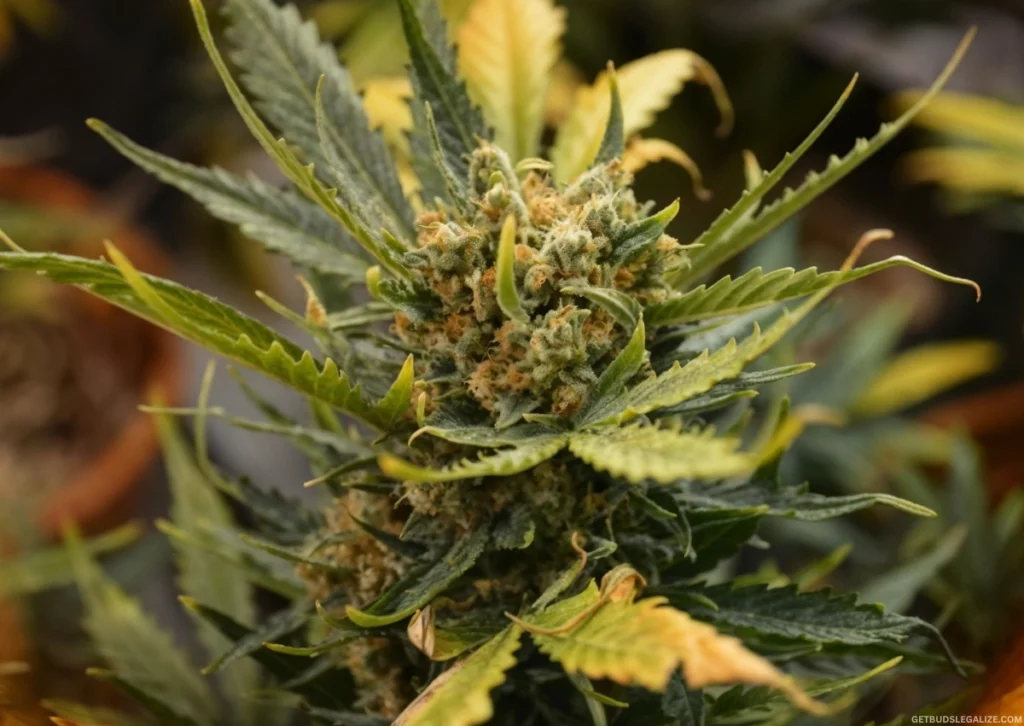
Understanding Early vs. Late Harvests: Adjusting to Real-World Conditions
Sometimes, real-world factors force growers to harvest outside the ideal window. Let’s explore what happens with early and late harvests—and when you might want to choose either option intentionally.
Early Harvest: When It’s Necessary and What to Expect
While early harvesting reduces overall yield and potency, it’s sometimes necessary to save your crop or meet specific goals.
Common Reasons for Early Harvest:
- Preventing Mold and Bud Rot: Humid or rainy weather late in the season increases the risk of mold and bud rot. If moving plants indoors isn’t an option, harvesting early might be the best defense.
- Physical Damage Risk: Strong winds, storms, or nearby activity can damage plants. Early harvest prevents loss from broken branches or damaged buds.
- Security Concerns: Outdoor or stealth growers may harvest early to avoid detection, even if it means sacrificing some potency.
Note: Cannabinoid levels are very low when flowers first appear, so avoid harvesting too early.
However, harvesting just a few days early only slightly reduces potency. Some harvest is always better than none.
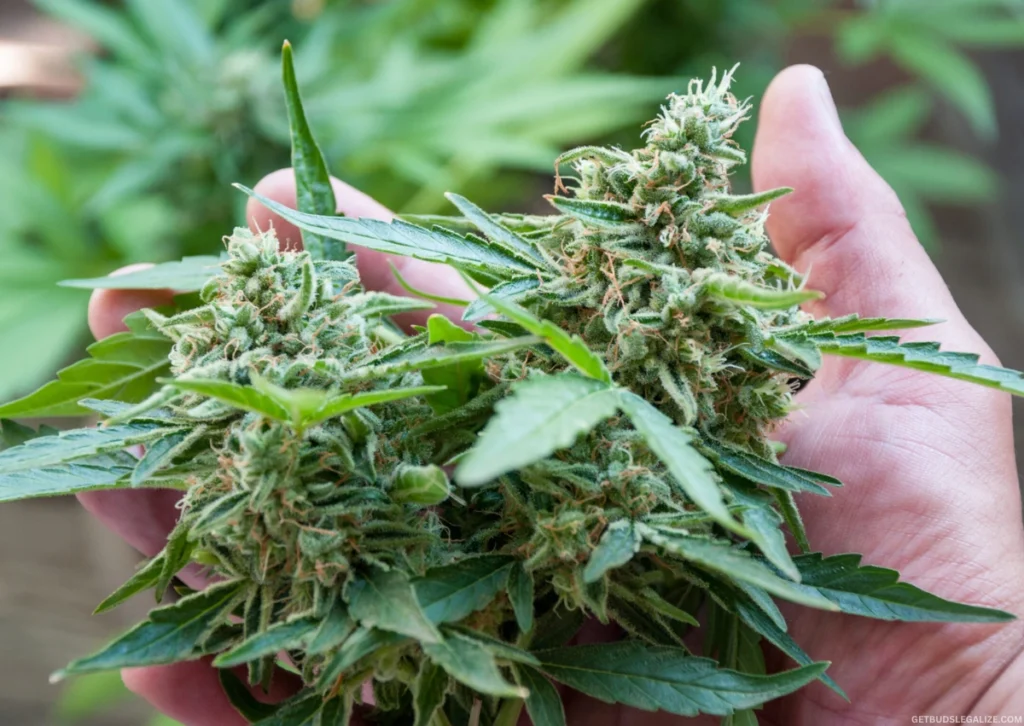
Late Harvest: What Happens When You Wait Too Long
Waiting too long to harvest means buds mature past their peak potency, which changes the effects and flavor profile.
Effects of Late Harvest:
- Potency Shift: THC degrades into CBN, producing sedative, narcotic effects, resulting in a heavy, couch-lock body high rather than the uplifting cerebral buzz.
- Flavor and Aroma: Terpenes may intensify initially, but extended maturity often leads to muted or unpleasant flavors.
- Effect on Strains: Even energetic sativa strains can take on indica-like relaxing effects when harvested late, useful for medicinal users seeking sleep or pain relief.
- Risks: Extended maturity increases the risk of plants becoming hermaphroditic (developing male traits), which can cause unwanted pollination and reduce bud quality.
✅ Final Harvest Readiness Checklist
- ✅ Trichomes mostly cloudy with some amber
- ✅ Pistils 60–80% dark and curled
- ✅ Fan leaves yellow naturally
- ✅ Buds are dense and aromatic
- ✅ You’ve flushed for 7–14 days (optional)
🚀 Pro Tip: Combine all signs together to pinpoint the perfect harvest window. Avoid relying on just one indicator for the best results.
Related Article:
Conclusion: Harvest at the Peak, Enjoy the Reward
Timing your harvest isn’t an exact science, but it’s a skill that improves with every grow. By paying close attention to visual cues like trichome color, pistil development, and leaf condition, you can confidently identify your ideal harvest window.
While breeder timelines provide a good starting point, your eyes and tools are your best guides. Even a few days too early or late can change your buds’ potency, flavor, and effects.
Stay observant, use the right tools, and be patient. Your reward? Resin-rich, aromatic buds harvested at their peak—perfect for the experience you’re after, whether it’s energizing, relaxing, or somewhere in between.
🌱 Happy harvesting!
Frequently Asked Questions (FAQs) about Harvesting Cannabis Plants
Yes, but it’s less accurate. You can rely on signs like orange pistils and yellowing leaves, but observing trichomes with a magnifier or microscope provides the best accuracy for harvesting cannabis at peak potency.
Harvesting cannabis too early results in underdeveloped buds. Expect reduced THC levels, grassy flavors, poor aroma, and weaker effects due to immature cannabinoids and terpenes.
Not always. The top colas mature first. Many growers harvest cannabis in stages, taking ripe top buds first and allowing lower buds more time to ripen.
Flush your cannabis plants with plain water for 1–2 weeks before harvest. This helps remove excess nutrients, improves smoke smoothness, and enhances flavor.
For optimal flavor and potency, harvest your cannabis early in the morning—just before your grow lights turn on indoors or at sunrise if you’re growing outdoors. At this time, terpene levels are at their highest, and the moisture content in the plant is ideal, setting you up for a smoother drying and curing process.
Use a jeweler’s loupe or a microscope to closely inspect your buds’ trichomes. When most trichomes appear cloudy or milky with some turning amber, it’s a strong sign your buds are ripe. Additionally, look for darkened, curled pistils and naturally yellowing fan leaves—these visual cues together indicate your cannabis is ready for harvest.
- Ripe buds: Dense, sticky, aromatic, with mostly cloudy trichomes and curled, dark pistils.
- Unripe buds: Fluffy, less fragrant, with clear trichomes and white pistils.
Some growers use stress techniques like 48 hours of darkness or cold temperatures to increase resin production before harvest. While not proven, it may enhance potency and trichome density—test it on small batches first.
Trichomes should be mostly cloudy (milky white), with some turning amber. Clear trichomes mean the THC hasn’t fully developed, and it’s too early to harvest.
- Wet trimming: Trim immediately after harvest. Easier, faster drying, but may lose some aroma.
- Dry trimming: Trim after buds have dried. Slower but better for terpene retention and flavor.
The final 2–3 weeks of the flowering phase are critical. During this time, cannabis trichomes and pistils change rapidly. Monitor daily to avoid missing the optimal harvest window.
ILGM Fertilizer

Ultimate Marijuana Fertilizer
Nourish your plants from seedling to harvest with our premium formula!
- Enough for 5+ Plants: Perfect for your growing needs.
- Exclusive Discount Package: Save more while you grow!
- Versatile Use: Ideal for soil, hydroponics, and all growing mediums.
- Optimal Plant Health: The best way to ensure robust growth and thriving yields.
ILGM Plant Protector

Ultimate Plant Protection for Your Cannabis
Safeguard your plants from diseases and harmful pests with our effective formula!
- Comprehensive Protection: Keep your cannabis healthy and thriving.
- Three 20 ml Bottles: Sufficient supply for up to 20 plants.
- Versatile Application: Perfect for soil, hydroponics, and all growing mediums.
- Peace of Mind: Ensure a healthy garden with our trusted protector.











